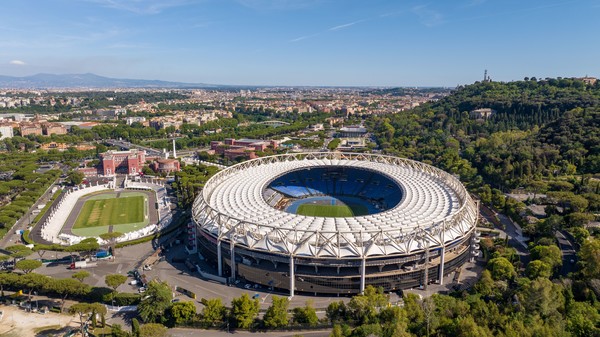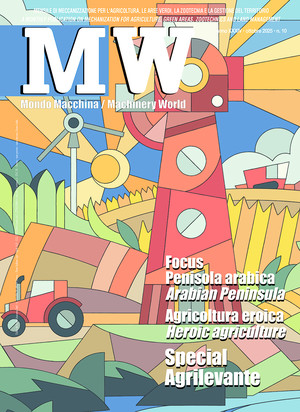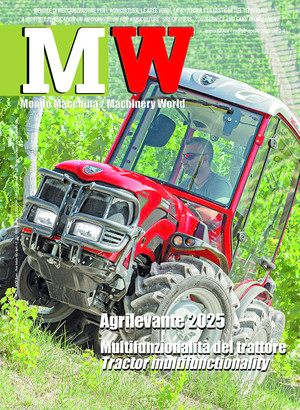
Soccer field/Football pitch maintenance
Proper maintenance of a soccer field (or football pitch) is primarily aimed at caring for the turf so that it best meets the needs of the game and the entertainment, such as the bounce and slide of the ball and playability even in the rain
There are three types of turf found on soccer fields: natural grass, synthetic grass, and hybrid (natural and synthetic). The type of grass used for natural and hybrid grass coverings must meet the requirements of soccer fields. In particular: rapid growth; resistance to trampling; resistance to fungal attacks; adaptability to low and frequent grass cuttings. The varieties most commonly used in areas with a continental climate are Lolium and Poa annua. Under good maintenance conditions, hours of play per year are typically about 450-500. In an attempt to reduce maintenance costs and extend the life of the turf, synthetic grass turf was introduced in the 1960s, and has since evolved considerably, being used in multiple stadiums. More recently there has been an increase in the use of hybrid turf made of plastic, which adds support and resistance to the natural grass which, however, remains by far the most used. This type of turf was used especially in Serie A stadiums with high pitch usage - such as those shared by two teams from the same city (like the Meazza in Milan, the Olimpico in Rome, and the Ferraris in Genoa) - and quickly became popular in other stadiums, even in lower divisions. Hybrid turf combines the characteristics of natural grass with those of synthetic fibers. Compared to natural grass, it is more resistant to the wear and tear caused by play and adverse weather conditions. Recovery after matches is also quicker and, furthermore, it allows for more than double the hours of play per year. Routine maintenance operations are similar to those for natural grass fields; however, they are less expensive, as water requirements are reduced by 30%, as well as the use of fertilizers.
Installation on football pitches can come from nursery-produced turf or be created directly on the pitch. Various operations are involved in the production of hybrid carpets in nurseries. To begin, there is a laser leveling of the ground to create a perfectly flat surface. Then, a plastic base is laid down to which the synthetic grass fibers are attached (with a density of around 70,000 strands per square meter). The base is then completely infilled with approximately 3 cm of silica sand. This last operation also involves the addition of organic matter, biochar, and bio-stimulants, and promotes water drainage and aeration of the root system. The process continues with the sowing of grass seeds deemed suitable for the climate in which the field will be located and with the cutting of the grass as soon as it is 22 millimeters high. For planting, these carpets are collected in rolls, no earlier than 12 months after sowing, and transported to their destination in refrigerated trucks.
The other option for creating a hybrid grass lawn is, as mentioned, done directly on the field. This involves covering the pitch with rolls of natural grass and then injecting the synthetic fibers. However, this technique requires a waiting time before using the carpet, which is not always compatible with the needs of football clubs.
Special maintenance and repair of natural or hybrid grass turf. Total returfing is a special maintenance operation that is performed when the turf is so degraded that its complete replacement is required. The operation is carried out in three phases and normally takes about 10 days. The first phase consists of stripping the old carpet with vehicles that remove the sub-strata in a single pass and grinds it before dumping the ground material into a side trailer. The second phase involves creating a good base for the grass cover by restoring the soil's aeration and drainage conditions. For this reason, both coring and drilling operations are carried out, using vehicles with cutters that make holes with a diameter even greater than 25 mm, as well as micro-drainage interventions, aimed at tapping into the main drainage network built in the past. In the third phase, the turf rolls are laid, mostly using robotic machinery to ensure the rolls are perfectly aligned. Generally, in the case of natural grass or hybrid turf, these rolls are around 120 cm wide and 8-12 meters long, and about 30-40 mm thick. Obviously, the carpet must meet the quality requirements set by FIFA, such as ball bounce (60-85 cm) and shock absorption capacity (62%-68%). Finally, the line markings are laid out and painted on the field.
Routine maintenance and upkeep of natural or hybrid grass turf. Routine maintenance must be performed promptly and accurately to ensure optimal use of the field. The grass should be mowed to a height of 25-30 mm. This is done 2-3 times a week during the period of thickest growth, while in the winter season the frequency is lower. All in all the grass is cut about 40-50 times throughout the year. Lawnmowers are used, both with helical blades and horizontal blades, with a remote operator or driver on board. The time required for each mowing is around 2 hours, including finishing operations. Robot lawnmowers with large working capacity, capable of offering excellent cutting quality are increasingly being used for these tasks. Irrigation is carried out using both mobile systems and, more frequently, with fixed systems or even by means of sub-irrigation, with can also be used for fertilization. At the end of the playing season, the water infiltration rate ranges from 100-150 mm/h in lightly used areas to less than 50 mm/h in heavily used areas. This is why it is necessary to carry out aeration and sandblasting interventions, which we will discuss later. Fertilization is primarily aimed at providing nitrogen units, while potassium and phosphorus inputs are particularly necessary in periods of climatic stress. Some 4-6 fertilization applications are carried out per year. In addition to the usual centrifugal spreaders for granular fertilizers, liquid fertilizer or sub-irrigation systems may be used. As for defense against fungal, parasitic, and weed attacks: prevention is crucial. The focus is on good soil drainage and aeration, as well as proper fertilization, to reduce the need for spraying.
Aeration operations may be surface or deep down. In the first instance, it involves dethatching, which removes part of the spongy layer of organic matter by means of a surface harrowing process; in the second, drilling or perforating the soil is performed. The vehicles used are called verti-cut for dethatching and verti-drain for drilling and perforating. Verti-drain machines operate with special cutters that penetrate the ground and create artificial air intakes up to a depth of 100-150 mm (or even more) with a diameter of 20-25 mm. The cutters used for drilling are solid, so only holes are made without loosening the soil; when puncturing, a core of soil is extracted, creating a loosening effect. As an alternative to mechanical drilling, water drilling may be performed using machines that make holes with high-pressure water jets. Sandblasting, or top-dressing, is essential not only after aeration work, but also to ensure the constant maintenance of soil conditions and the improvement of water infiltration capacity. The operation consists in the spreading of silica sand with sand spreader trolleys, or even with centrifugal fertilizer spreaders. To make the penetration of the sand easier, verti-brush machines are used, equipped with brushes rotating on a vertical axis which, in addition to spreading the material evenly, facilitate its incorporation. The doses of sand vary from 0.5-1 liters/m2, to 4-5 liters/m2 for operations following drilling or coring.
Routine maintenance of synthetic grass turf. Although less demanding and costly, maintenance interventions are essential to preserve the integrity of synthetic grass turf. This primarily involves brushing with vacuum brushers to help keep the fibers straight and clean, regular washing with a hose to remove dirt and prevent bacterial buildup, periodic disinfection to prevent and eliminate microorganisms, and filling the base of the filaments with sand granules to keep them straight. These operations are carried out especially in the most trafficked areas, such as those near the goals.








